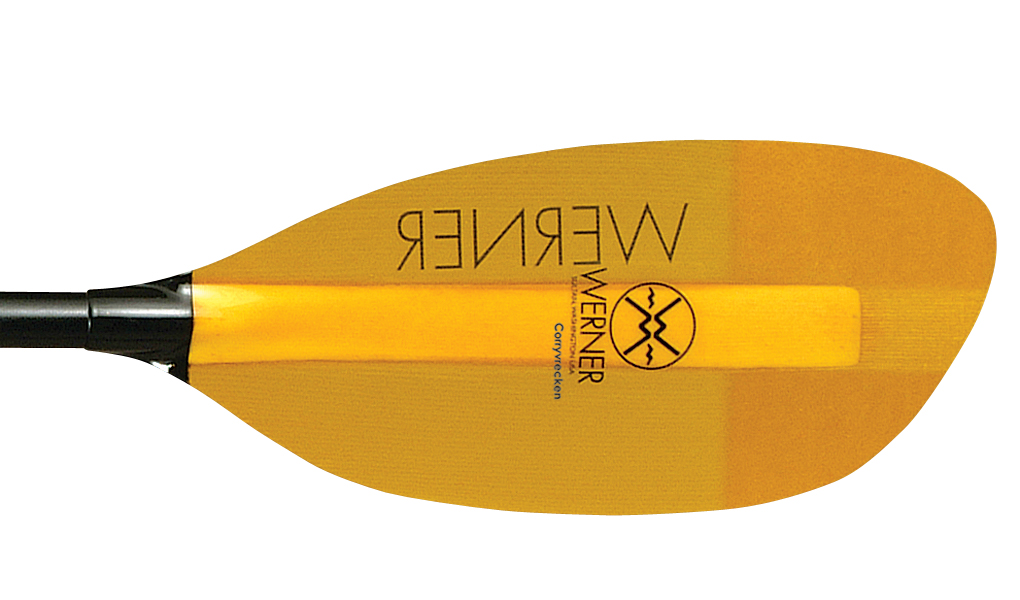The Deets:
Surface Area: 710 sq cm
Blade Length x Width: 49 x 20cm
Available in Werner’s: Premium (fiberglass) and Performance (carbon)
Angle Type: High
Sharing the same surface area and blade dimensions as the Werner Ikelos, the Corryvrecken is designed for well-conditioned paddlers who want high-angle, big water performance. The Corryvrecken/Ikelos blade is one of the largest touring blades available without moving into the whitewater class of paddles. Fit for playing in surf, aggressive bracing, flatwater racing, or fitness paddling, these blades pack a PUNCH when they purchase the water.
On paper, the Ikelos and the Corryvrecken look virtually the same. The biggest difference between the two Werner paddles is the material construction and the price. When one moves from the straight-shaft performance in carbon to the proprietary performance-cored Ikelos, we see a price jump from $350 to $400. Like many folks, I wondered what constituted the $50 price increase and ventured to purchase a Corryvrecken as a play/instruction paddle.
I purchased a red premium fiberglass Corryvrecken about two seasons ago with the plan to use primarily for flatwater racing and instruction. At first, I was impressed the Corryvrecken’s powerful catch and smooth linking from one paddle stroke to the next. I felt that the Corryvrecken managed its surface area well and provided a nice balance between surface area and purchase. I paddled with the Corryvrecken for a full-season which provided me with plenty of sea time to become familiar with its handling characteristics.
The more I paddled with it, the more I became disappointed with the performance it delivered. I noticed (particularly on slower drawn paddle strokes) that the Corryvrecken fluttered greatly. As I drew the blade threw the water, it nearly resisted the desire to be pulled through the water, jig-jagged, and fluttered back and forth. Not only did the blade flutter through the water (which can often be expected with wider blades) but the Corryvrecken flexed considerably during more aggressive strokes and braces. When I say flexed, this is not kayaking lingo, I literally mean that the blade flexed during strokes. The flexing contributed to a compromise in efficiency which added to its failure to make complete use of the surface area.
How about draw strokes? I would have better purchase on the water if I taped a paper plate to my hand than if I used the Corryvrecken for draw strokes. Drawing the boat laterally is a labored chore for the Corryvrecken, and every attempted draw stroke merely flutters into wasted effort.
Overall, the Corryvrecken performs well as a fast-paced touring or racing paddle. It provides dependable performance during bracing and rolling. When you bring the Corryvrecken down to slower, more relaxed pace, its performance is compromised (especially during draw strokes).
Pros: Smooth transitions, solid bracing and rolling, great blade design
Cons: Flutters during slower strokes, flexes, weak performance during draw strokes
-Alex



